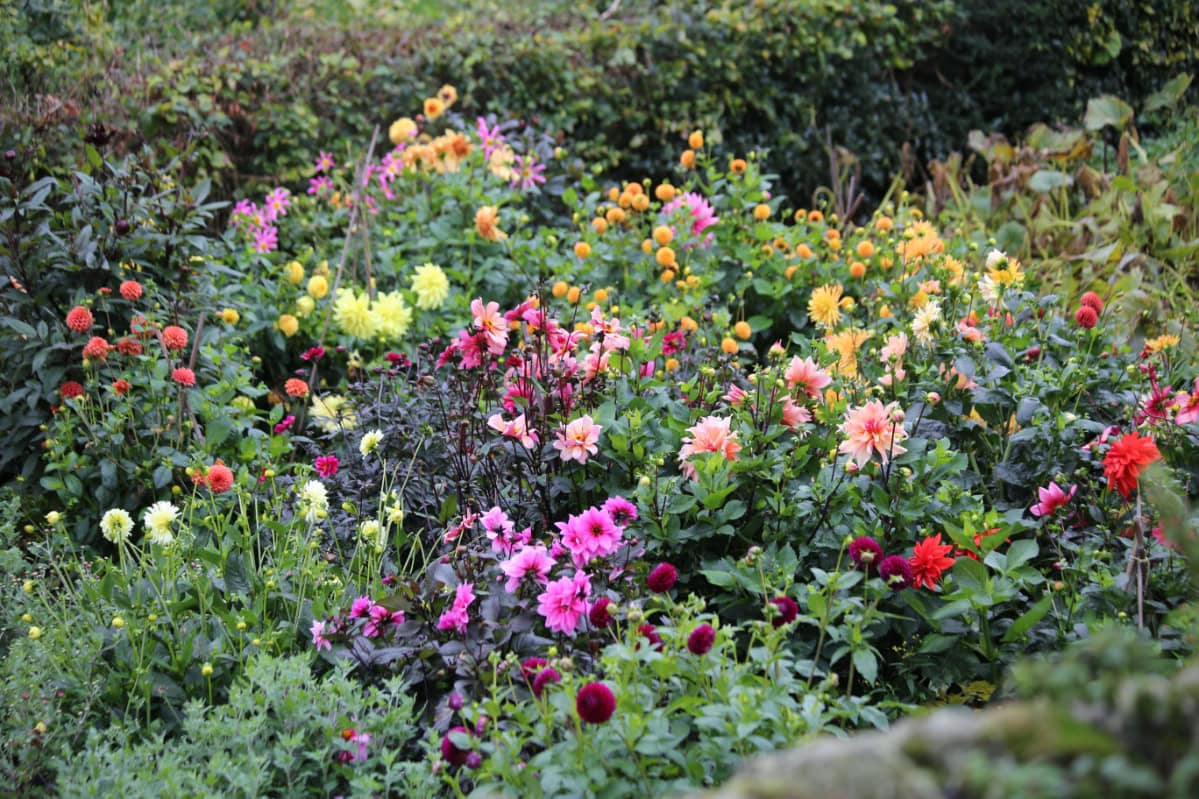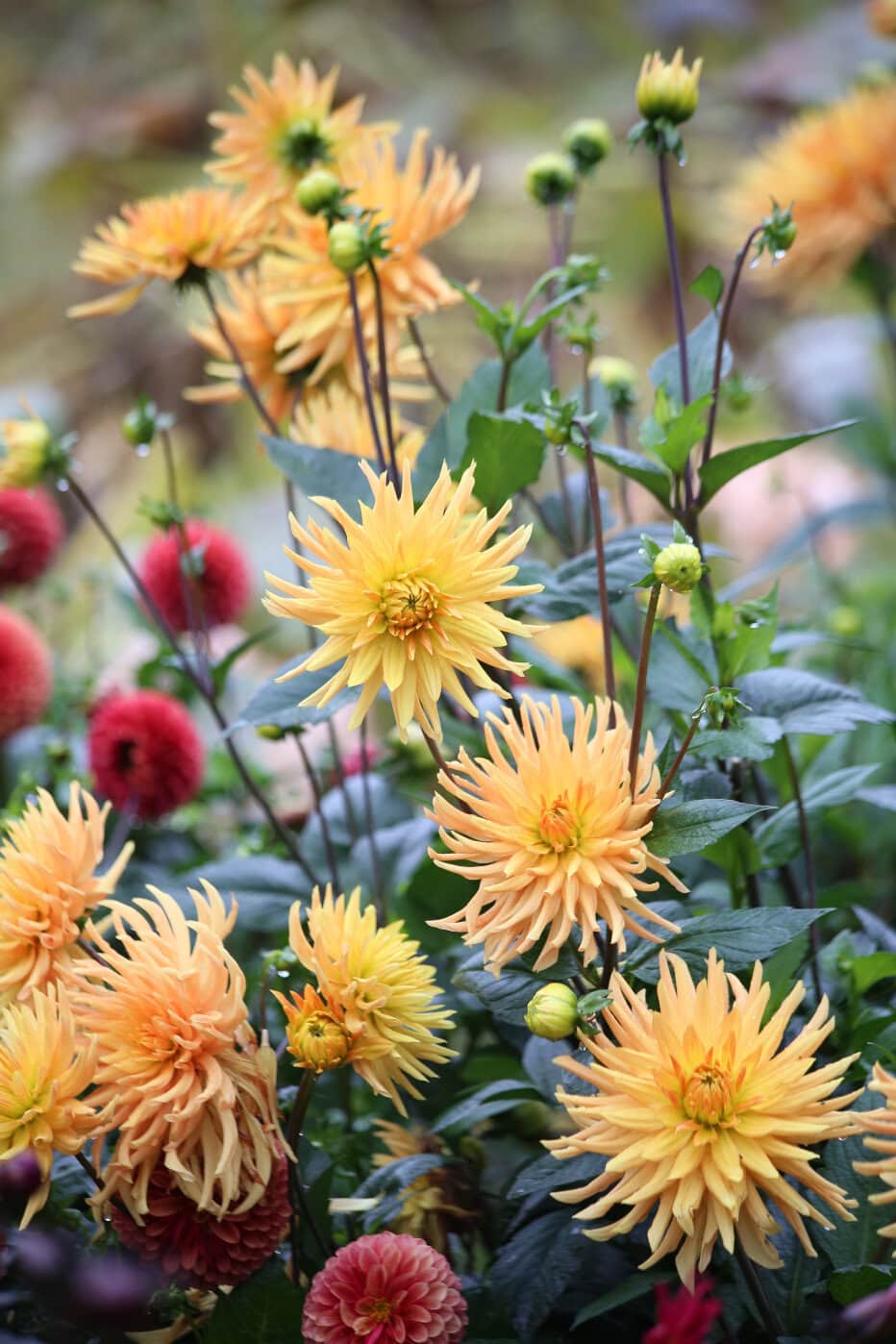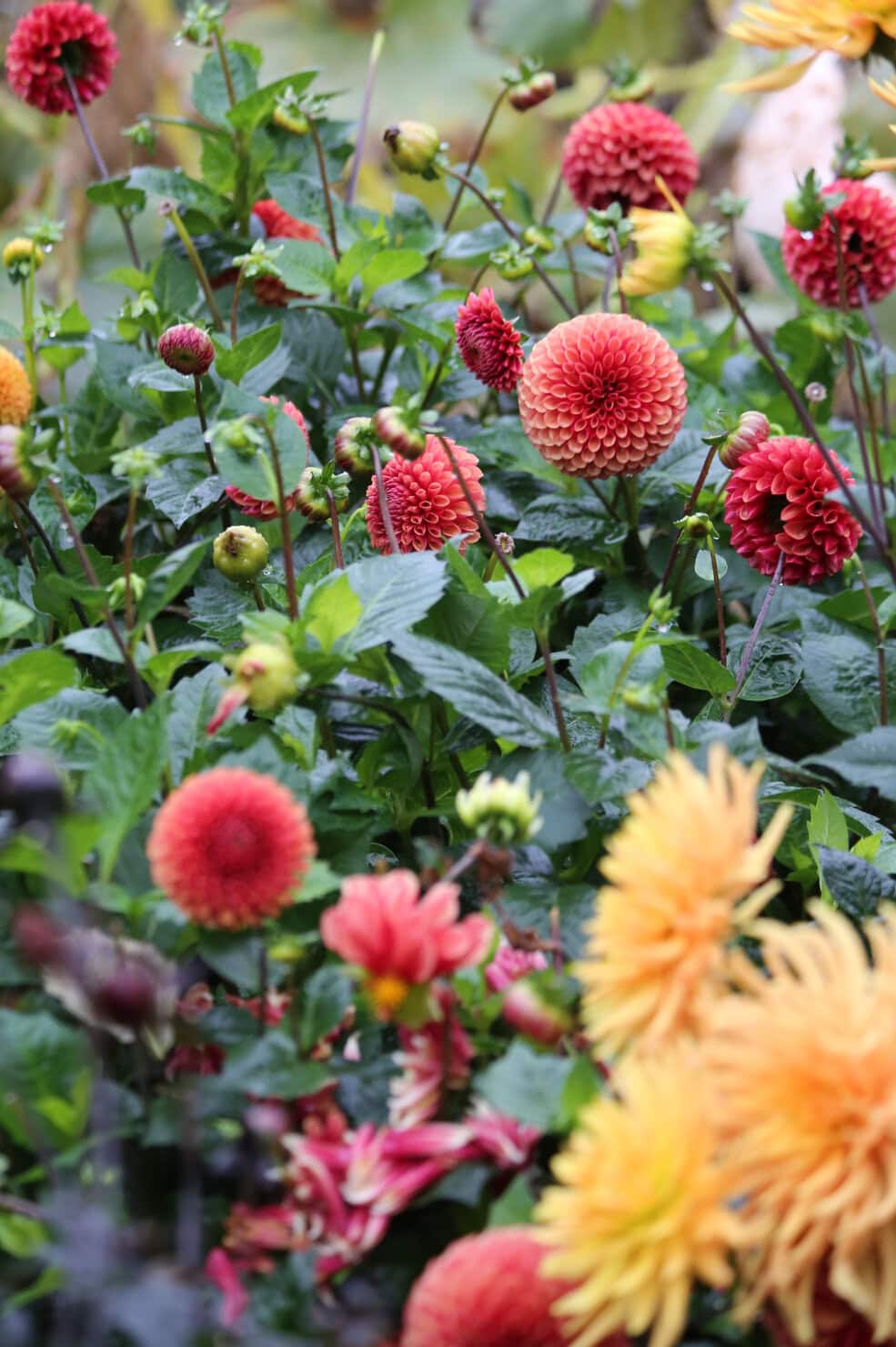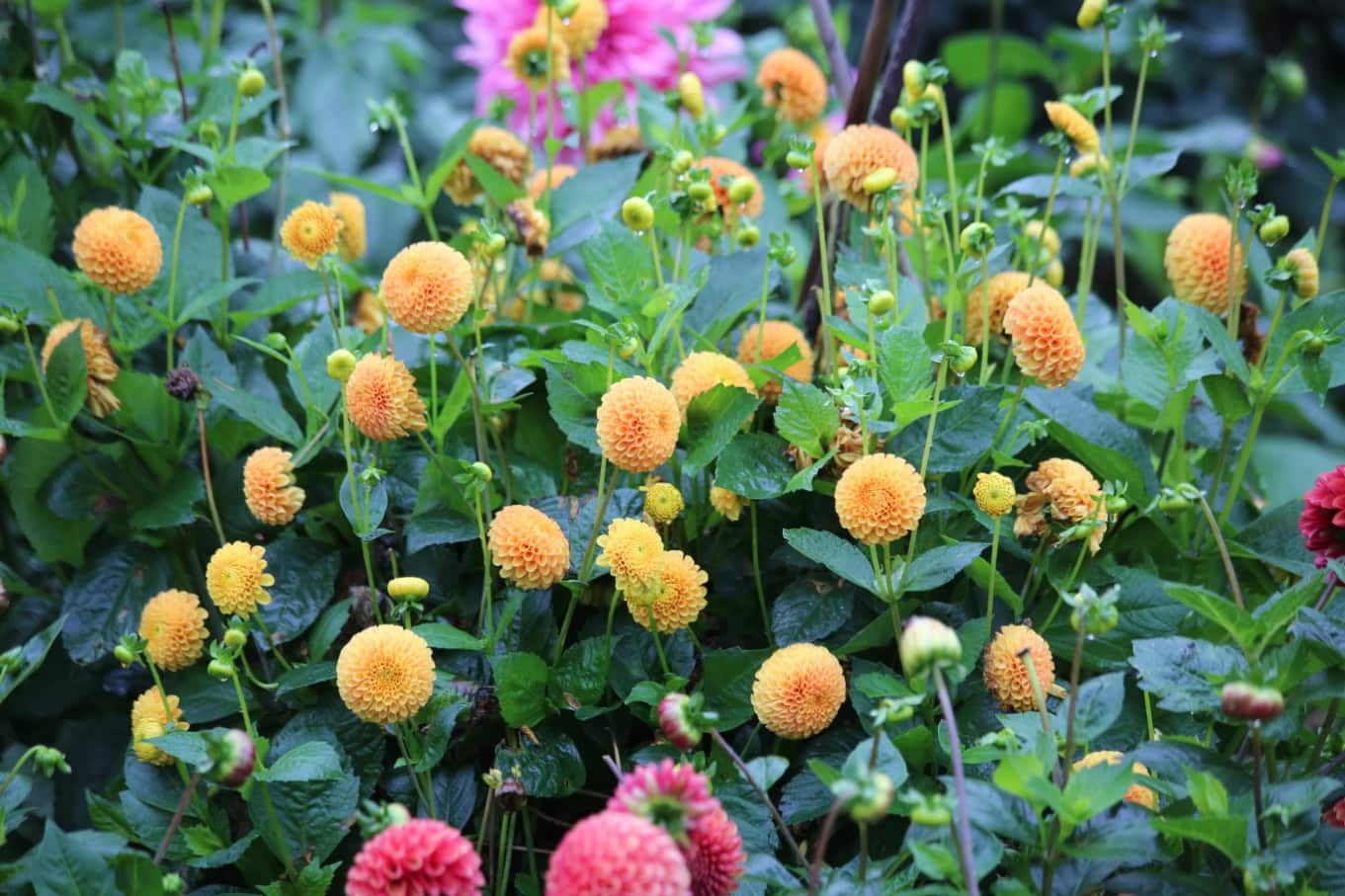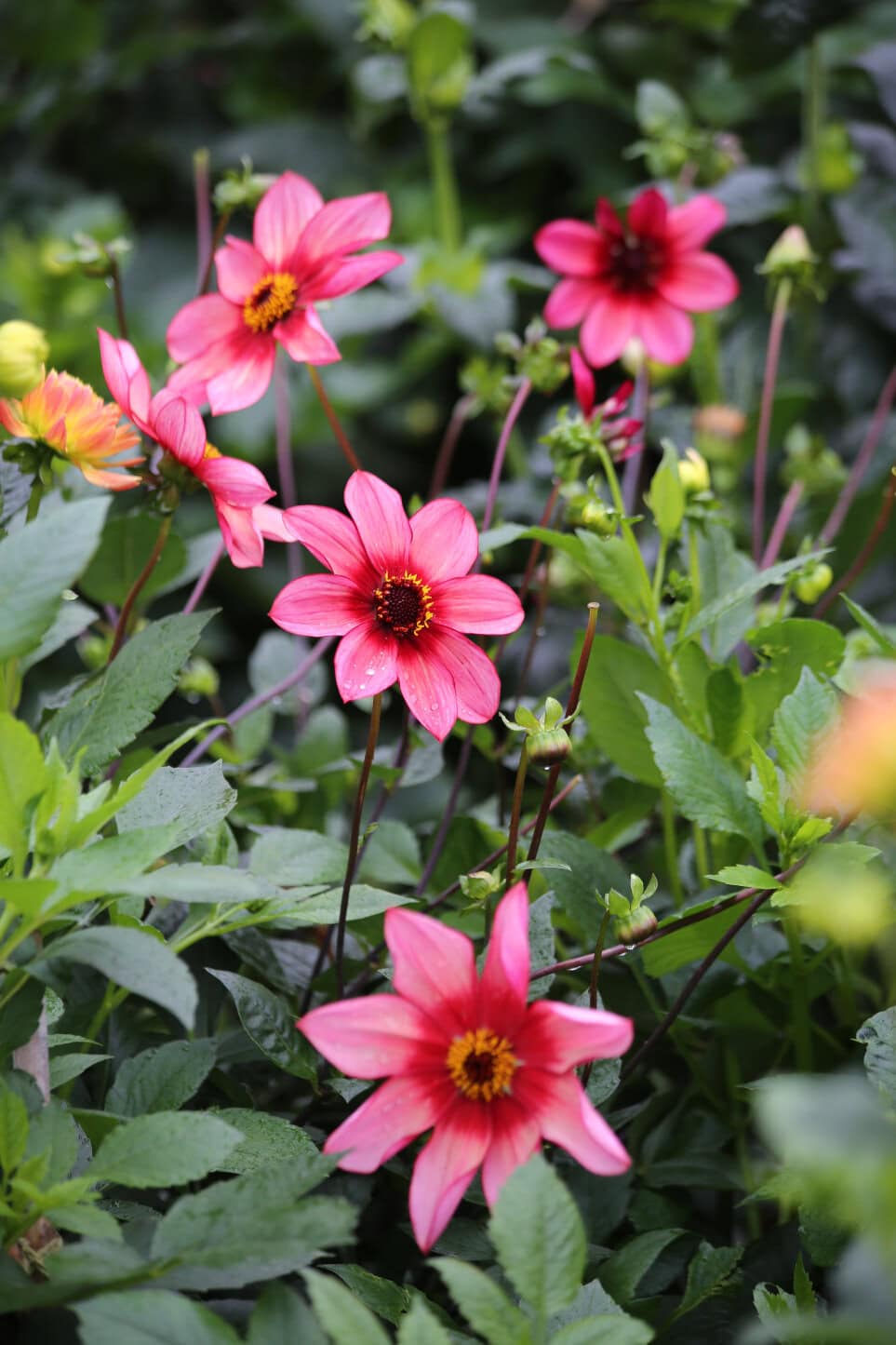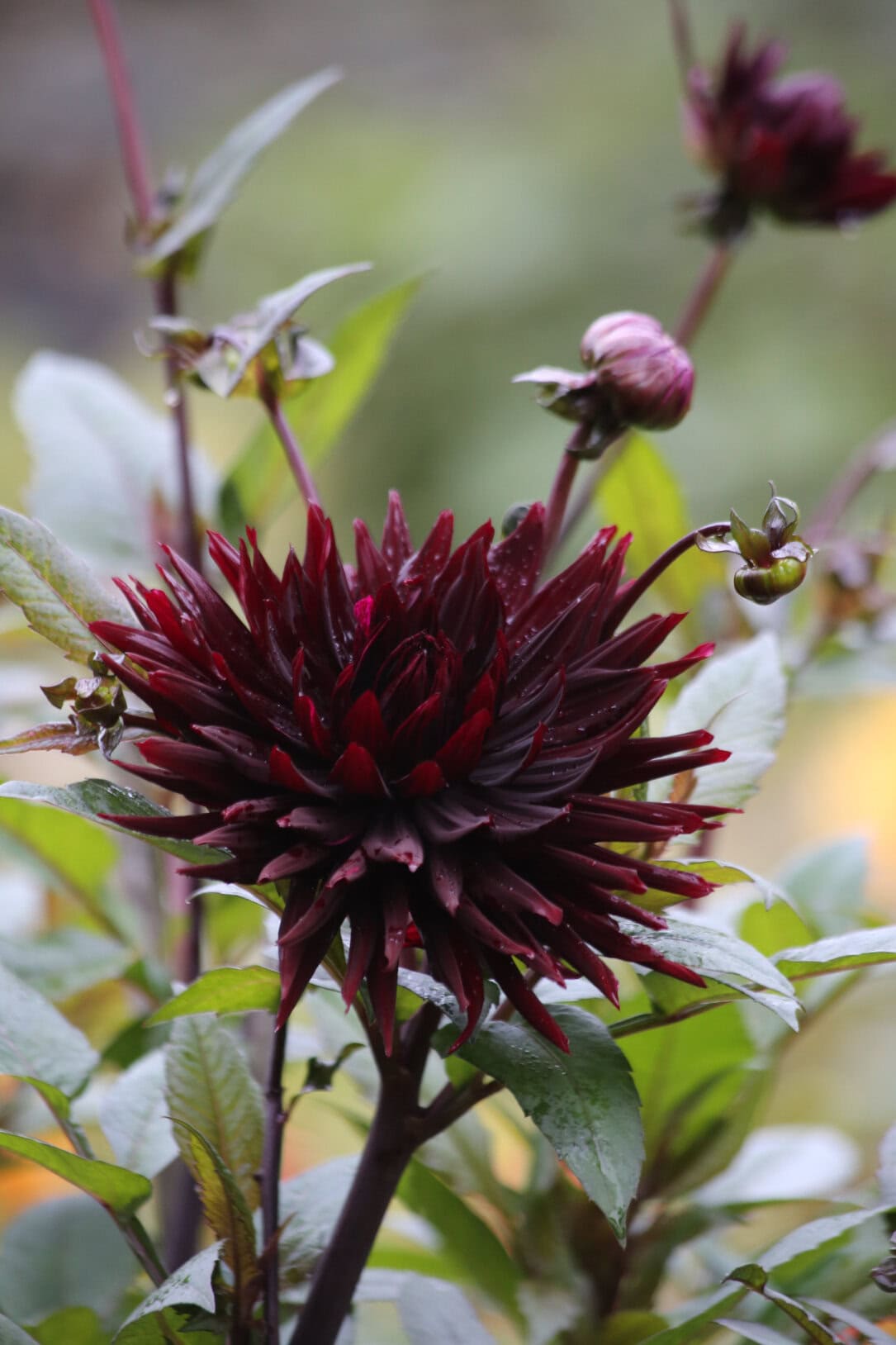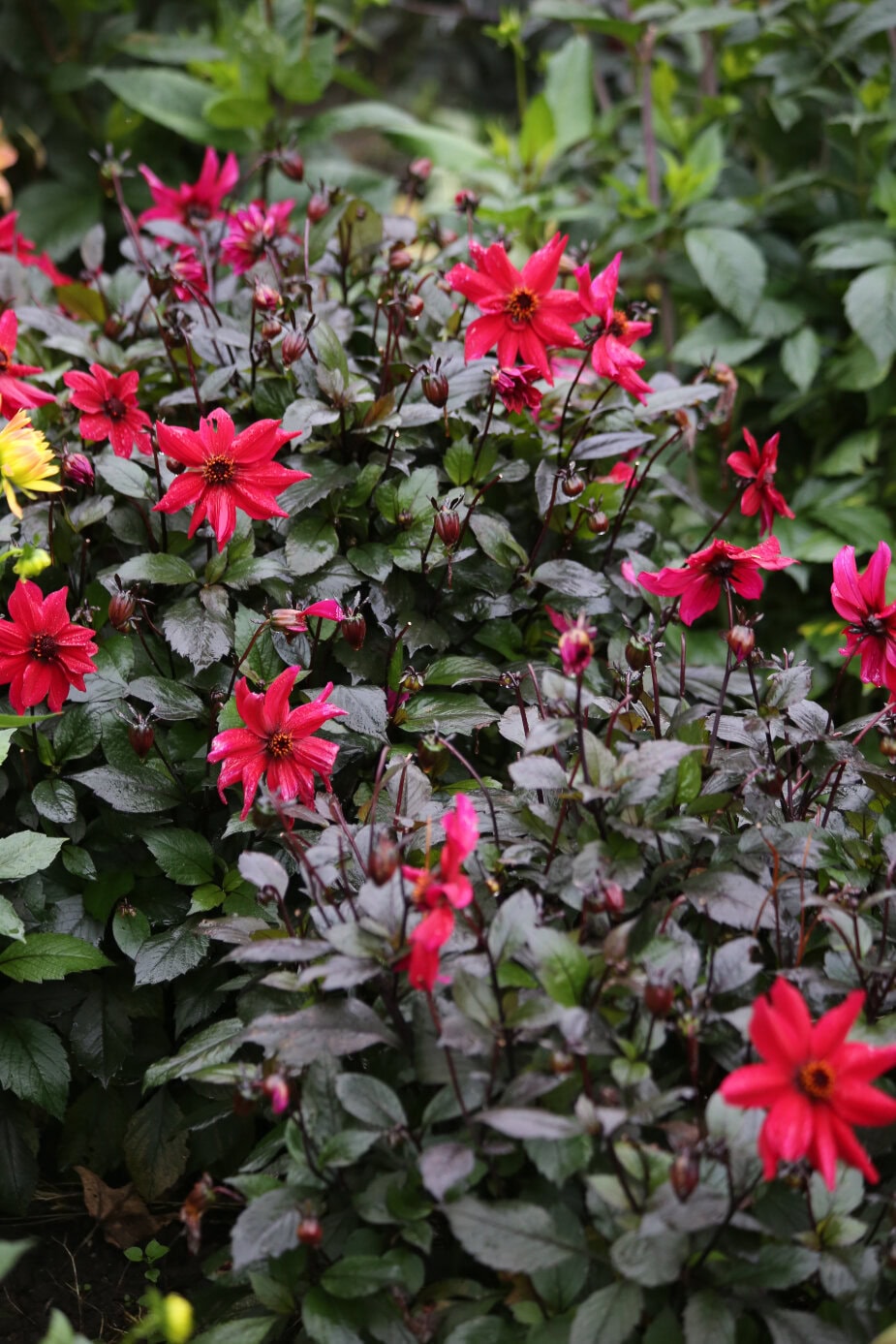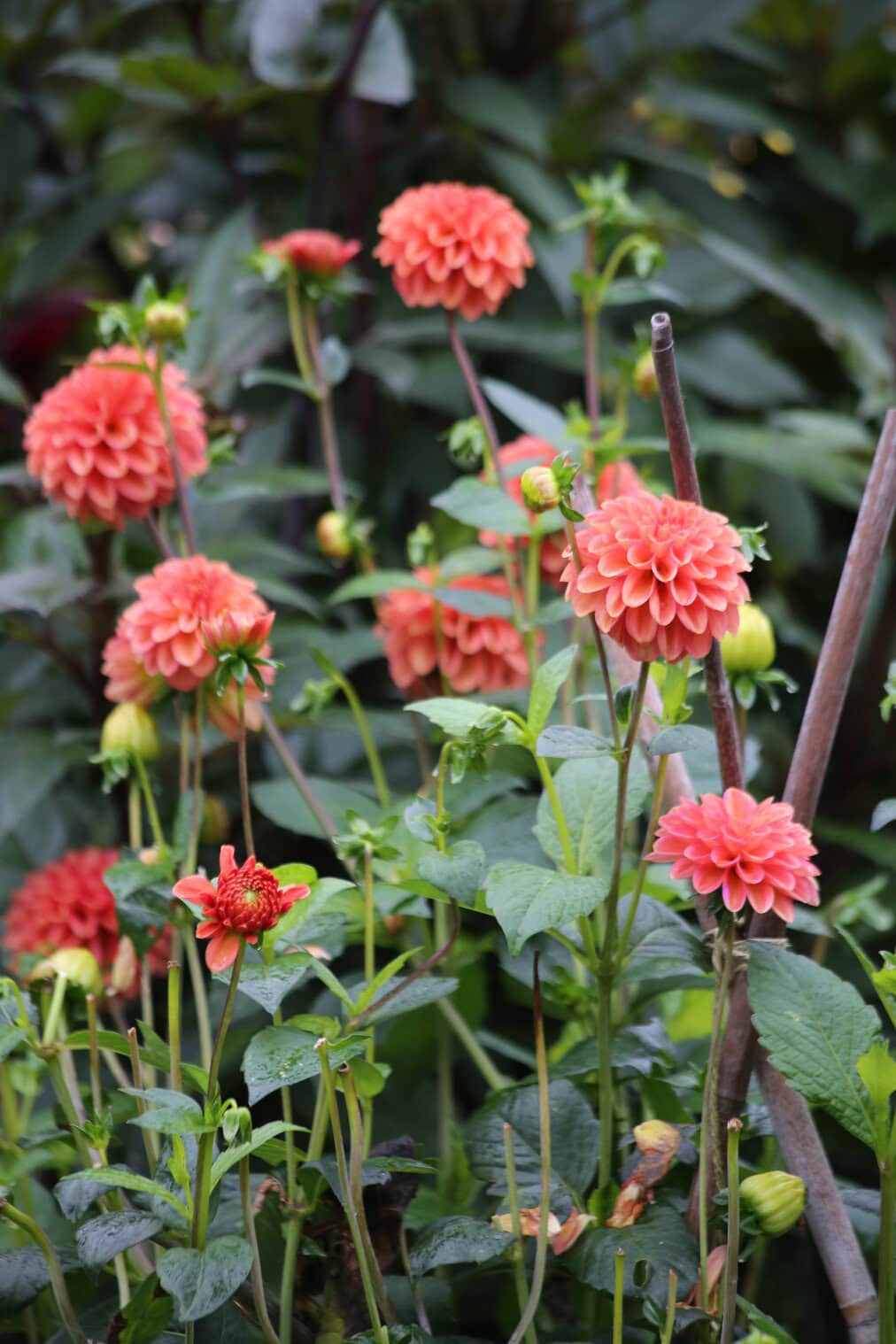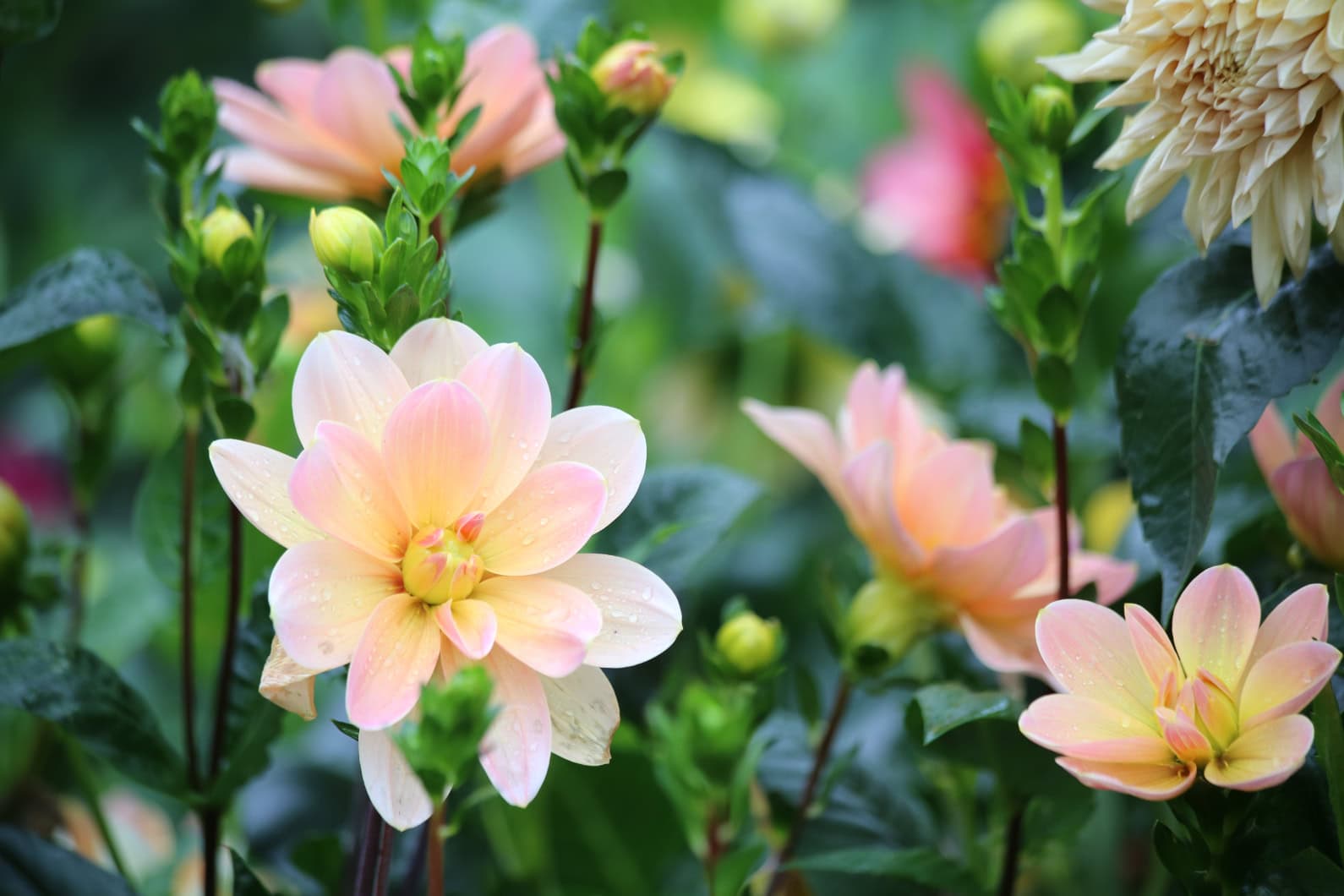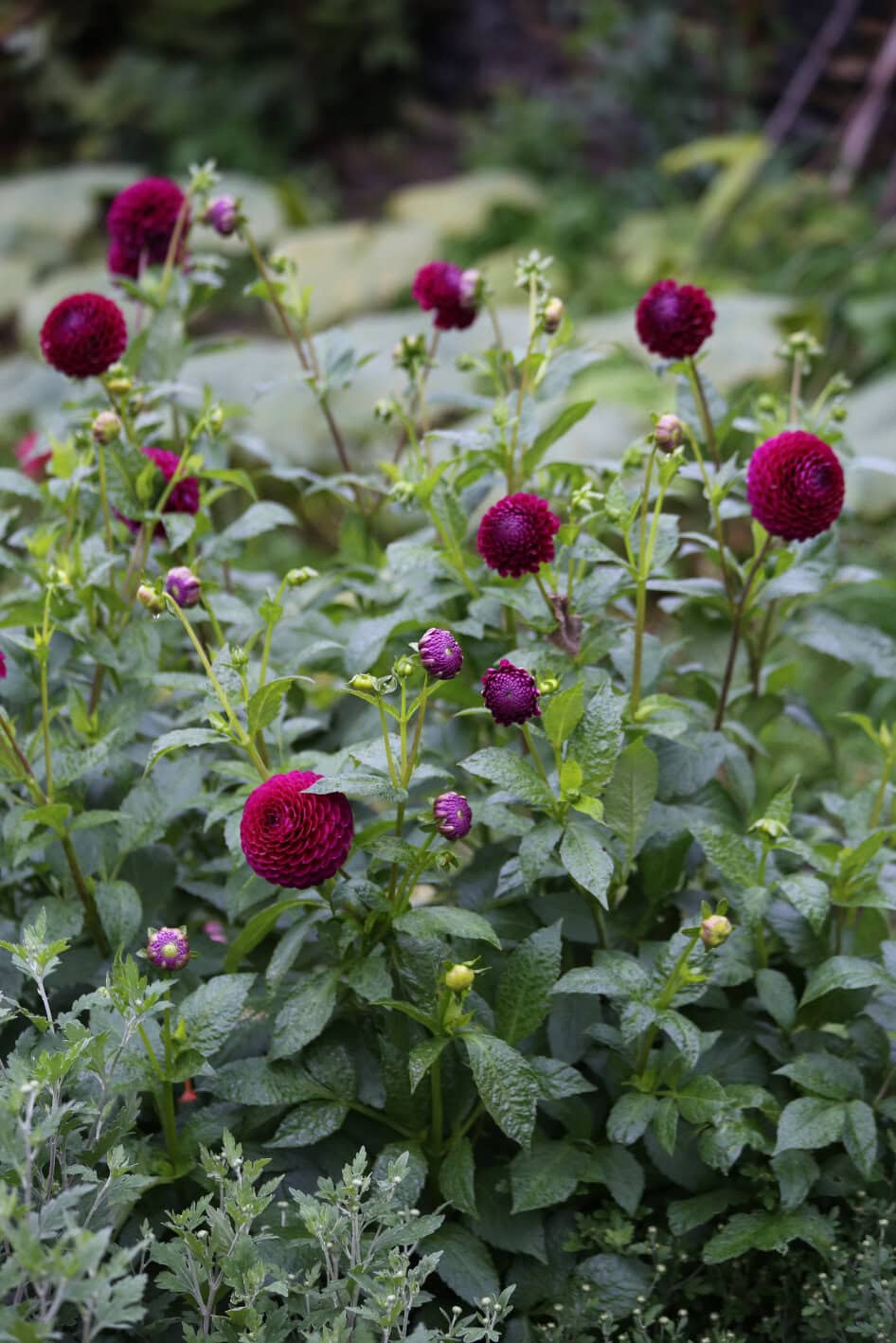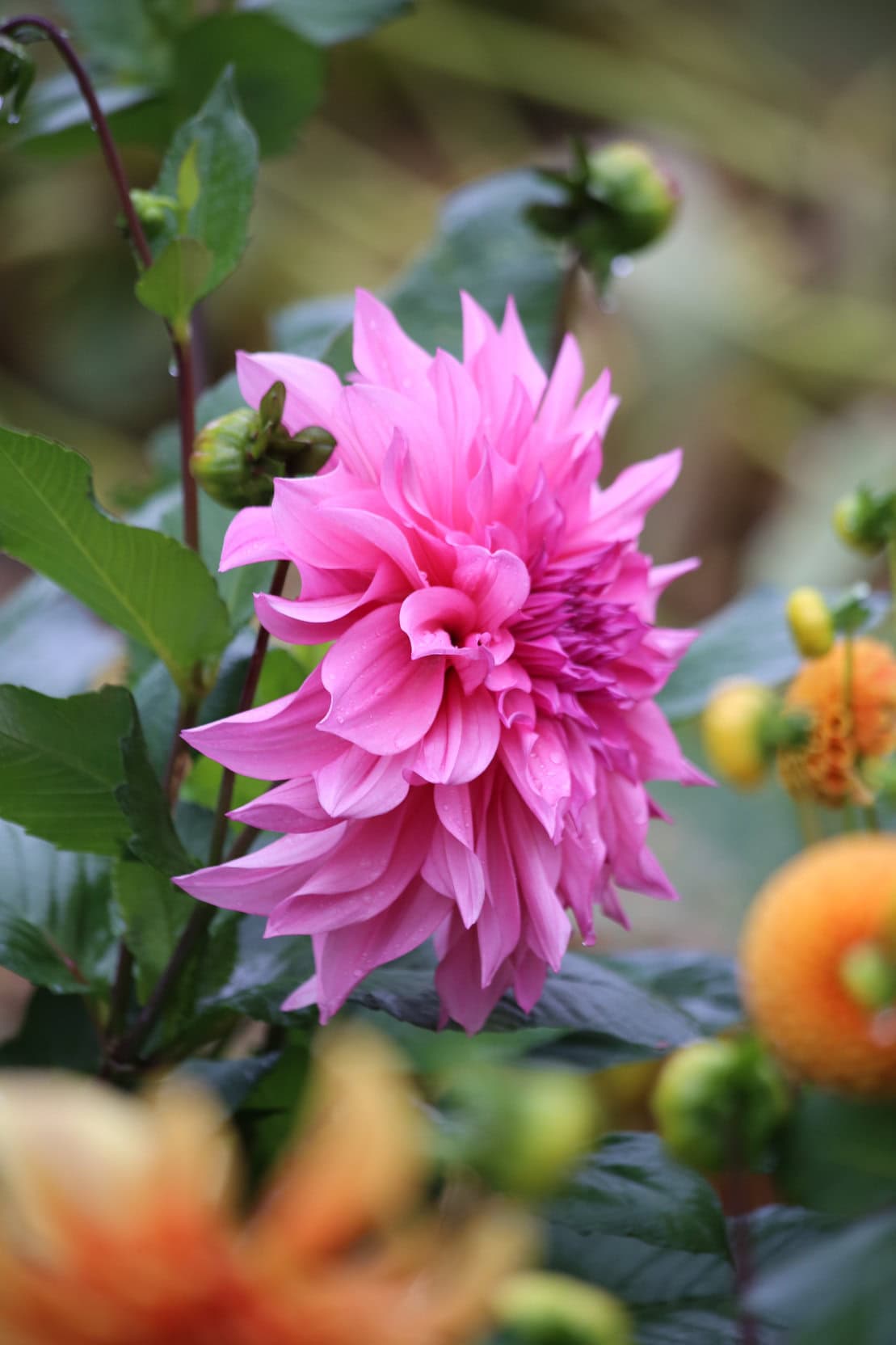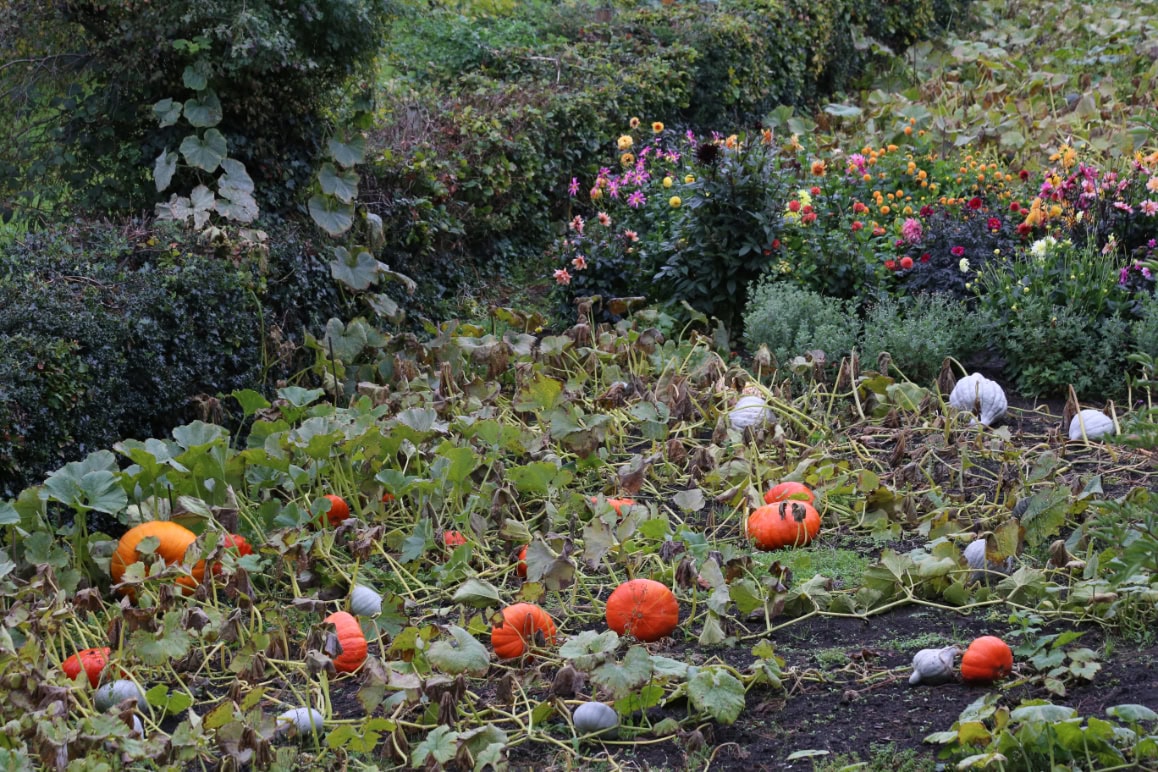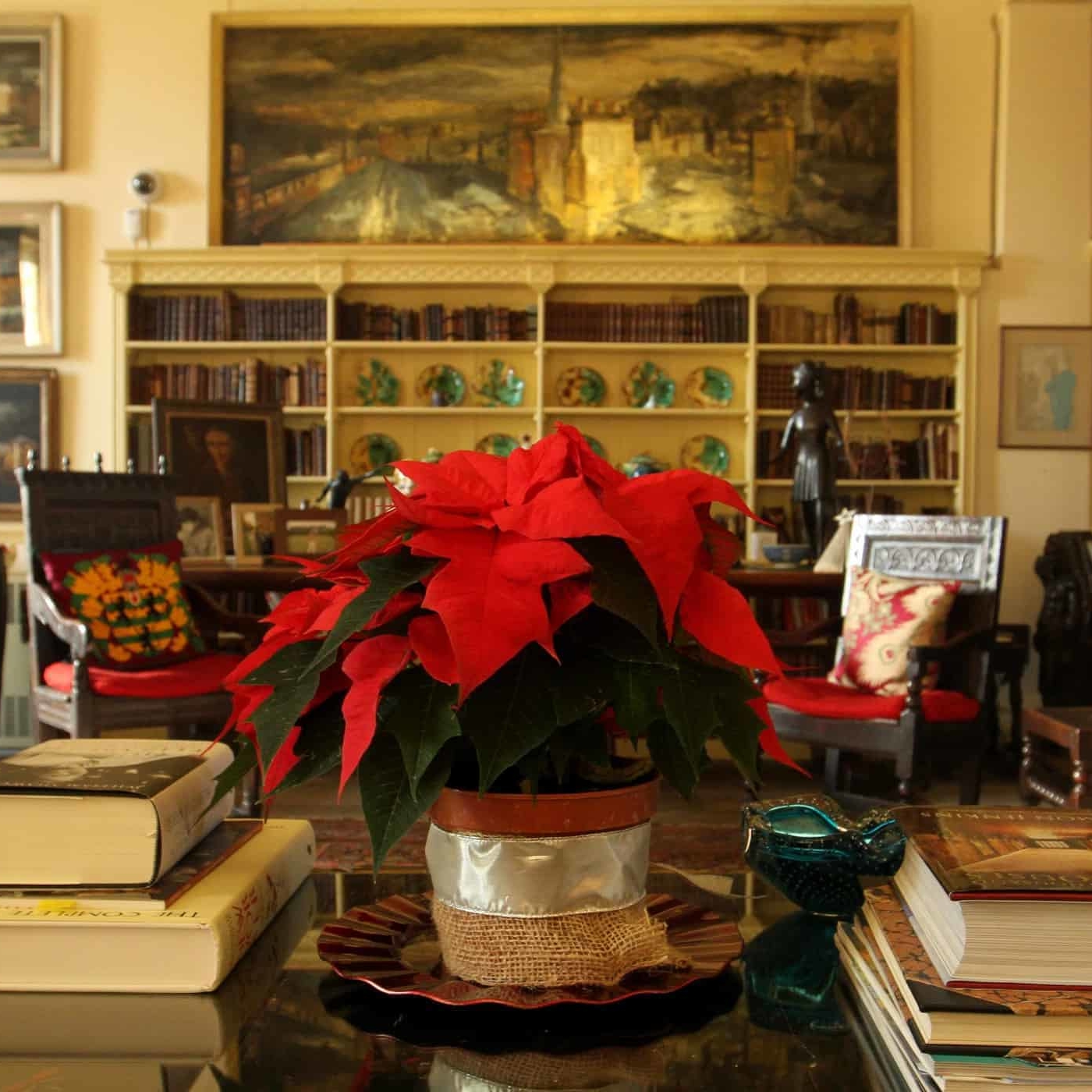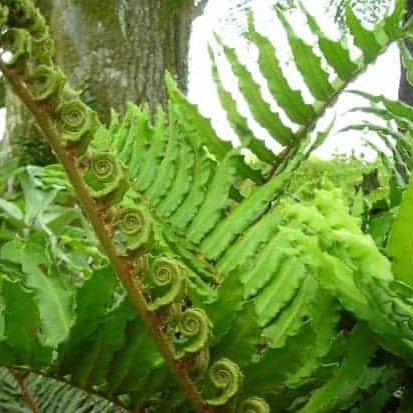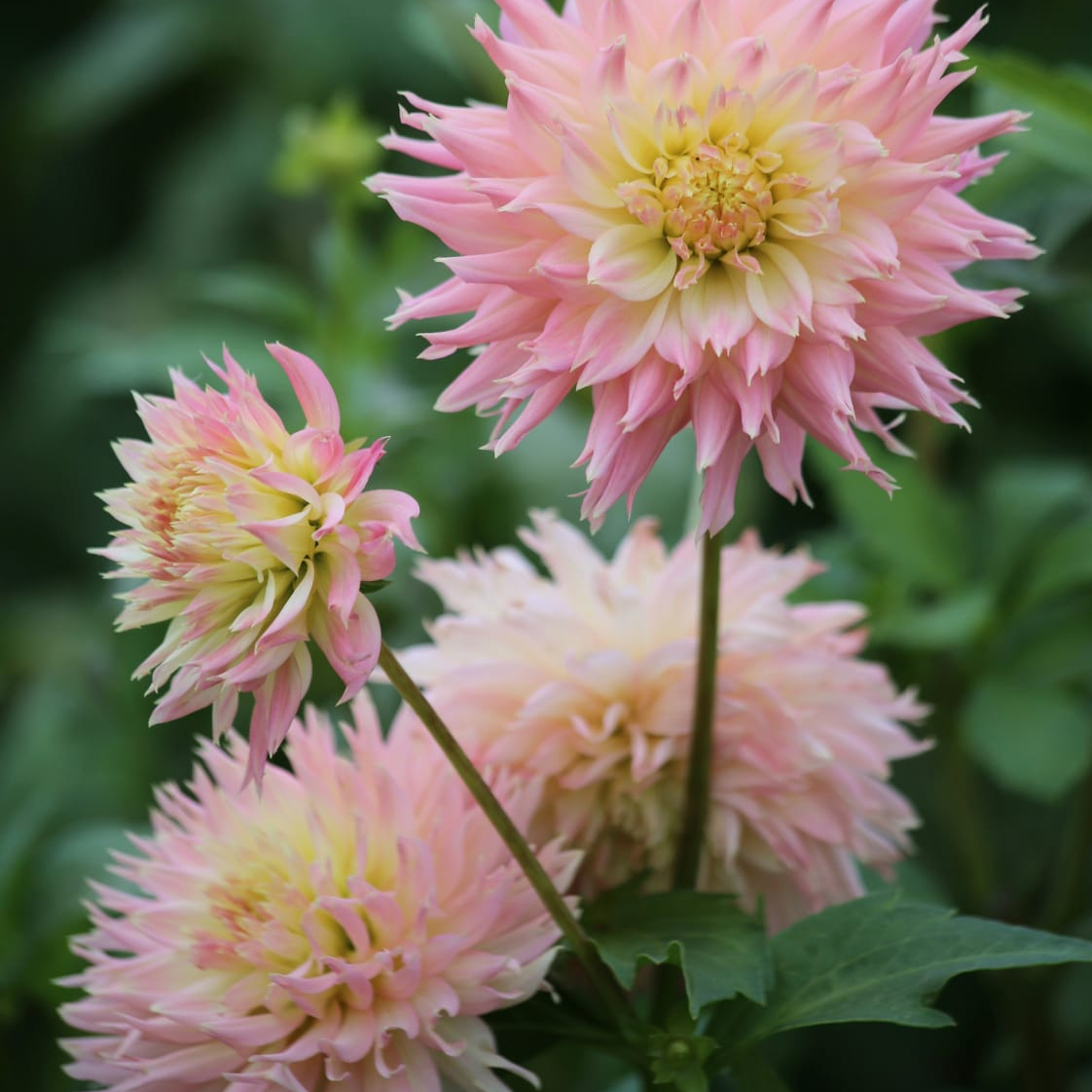Cutting Edge: Top 10 Dahlias for a low-maintenance cut flower patch
I recently took on a small allotment just down the road, a spot with a wonderful history—it was a productive vegetable garden for a century and even home to a serious chrysanthemum grower with coal-fired boilers and big glasshouses. Now, it’s my turn to tend the soil, and I decided to dedicate a corner to my great love: cut flowers, specifically a low-maintenance cut flower patch for Dahlias, alongside winter squash to cover the ground, and some perennial veg. I first went big on Dahlias 5 years ago, you can read about it here.
It’s been a fantastic first season, proving that even in a scorching heatwave, these magnificent blooms can thrive with surprising resilience. We started all 22 varieties in pots under glass in April and planted them out in late May.
The Low-Input Approach
I’m a busy boy, so I opted for a relatively low-input approach that worked just fine;
- A small handful of blood, fish, and bone went into the hole at planting time, and no other feeding after that.
- Each plant got about 5 litres of water on planting, and another 5 litres a few weeks later, and after they were left to fend for themselves through the drought. The soil on the plot is nice rich loamy airy soil that will support really deep rooting, which I think certainly helped. On poorer soils they may have needed a bit more water.
- I weeded the area quickly just 3 times, only pulling competitive weeds once reaching a good pullable size, smaller annual weeds were left to do their thing. The dahlias quickly filled the space and the small annual weeds at the base present no issue.
- For the first winter, I’m planning on leaving the tubers in the ground, protected by a generous mulch of loose, free-draining woodchip to keep the frost at bay.
My top 10 from this year are listed below, I also grew a number of other beautiful dahlias—all of them lovely, —including Ice Crystal, Kelvin Floodlight, Golden Scepter, Fascination, Waltzing Matilda, Honka Pink, Bishop of Canterbury, Felida Solar Flare, David Howard, Cafe de Paris, and Happy Single Kiss, but the top ten were my favourites overall.
The Top 10 for the Vase
From the 22 varieties I grew, these ten were the absolute stars for cutting. They all provided a bounty of flowers right through the season, and many will be fixtures in my patch next year.
1. Ludwig Helfert
- Stem: Very long
- Vase life: Very good
- Productivity: Very high, starting early
- Notes: The best overall—high performance and works with countless colour palettes
2. Copper Boy
- Stem: Fairly long
- Vase life: Long
- Productivity: Very productive, starting early
- Notes: One of the best performers this year, excellent warm, coppery tones
3. Bantling
- Stem: Short, but so floriferous you can afford to cut a longer stem and cut off the side shoots
- Vase life: Good
- Productivity: Very high, a silly amount of flowers
- Notes: Fabulous and fun; these small pompoms cheer up any arrangement
4. Lou Farman
- Stem: Nice and long
- Vase life: Fairly short, as with all single flowers
- Productivity: Fairly high, starting early
- Notes: Such a beauty; a lovely single-flowered bloom that is popular with the bees
5. Black Jack
- Stem: Fairly long
- Vase life: Very long
- Productivity: Low, starting late
- Notes: Unrivalled colour and great vase life make up for low yield. Needs definite staking
6. Pride One
- Stem: Short
- Vase life: Fairly short, as most open-centered single flowers are
- Productivity: Very productive, absolutely covered in flowers, starting early
- Notes: Vivid colour on dark foliage. Short and stocky, needs no staking. Requires lots of deadheading
7. Zundert Mystery Fox
- Stem: Fairly short
- Vase Life: Good
- Productivity: Very good, starting early
- Notes: Such a refreshing coral-ish colour. Strong performance
8. Mr Frans
- Stem: Mid length
- Vase life: Good
- Productivity: Pretty good, starting mid-season
- Notes: Calming flowers, perfect for pastel shades and softer arrangements, but their brightness works with zingier colours too
9. Downham Royal
- Stem: Fairly short
- Vase life: Good
- Productivity: Fairly low, starting mid-season
- Notes: The rich, deep purple works perfectly with other bold reds, pinks, and oranges. Strong grower, but benefits from some support
10. Penhill Dark Monarch
- Stem: Fairly short
- Vase life: Good
- Productivity: Fairly few flowers, but huge blooms, starting mid-season
- Notes: Such a beautiful colour and size. Huge blooms, but needs support despite a fairly strong stem
Key Takeaways for cut flower growing
- Prioritise Performance: Dahlias like Ludwig Helfert and Copper Boy offer the perfect trifecta of long stems, great vase life, and high productivity, making them essential for high-demand cut-flower beds.
- Productivity vs. Drama: Don’t dismiss lower-productivity varieties like Penhill Dark Monarch and Black Jack. Their size, colour, or vase life is often worth the extra space for those statement arrangements.
- Short and Sweet: Shorter, stockier varieties like Pride One and Bantling are great for the edge of a bed—they require minimal or no staking and still pump out a huge amount of usable blooms.
- The Bee Factor: Including single or semi-double varieties like Lou Farman and Pride One not only provides a different flower form for arrangements but is also a fantastic way to support local pollinators.
It’s clear this little patch of history is ready for its next chapter! I look forward to sharing more of my allotment adventures and cut-flower triumphs.
Owen Hayman
Owen joined the Bestall & Co planting and aftercare team in spring 2019. He is an RHS qualified horticulturist, holding a full Level 3 Diploma in Horticulture, and recently came in the top 3 at the Northern Regional Final of The Young Horticulturist of the Year 2019. After first doing a foundation diploma in Fine Art, he went on to gain a degree and masters in Plant and Soil Science from the University of Sheffield in 2014. Owen worked as a researcher on various field research projects in Alaska, Panama and Borneo. When not away in the field, he became obsessed with visiting gardens and nurseries across the British Isles and the Netherlands, developing his own garden, and then taking on a walled allotment garden as a personal project. He realised his true passion was in horticulture, and so moved away from academia and into the world of specialist plant nurseries and professional gardening.
Owen is now studying the Wisley Diploma, but continues to write articles for us on a monthly basis, and we're delighted to maintain contact with such a passionate and knowledgable plantsman.

